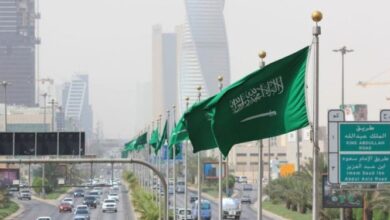Protest campaign on social media against worsening unemployment rates in the Kingdom

Tweeters launched a protest campaign against the escalating unemployment rates in the Kingdom in light of the Saudi regime’s failure and economic failure.
Tweeters strongly criticized the Saudi regime and its neglect of setting actual solutions to the unemployment crisis, especially the Crown Prince Mohammed bin Salman and the failure of his economic plan known as Vision 2030.
Specialized international reports confirm that the promises of the Saudi regime to reduce unemployment rates in the Kingdom have turned into a mirage and new evidence of catastrophic economic failure.
And the American “Bloomberg” agency specialized in economic affairs published a report on the reality of the Kingdom’s economy, confirming that unemployment rates among Saudis will not decrease in the coming years.
The report shows that any improvement in the non – oil sector – even if it is a strong improvement – “cannot contribute to solving the unemployment problem that the Kingdom suffers from, especially in light of the lack of confidence felt by foreign companies operating in the Kingdom, and in light of the continued imposition of taxes and fees that affect their expansion and employment decisions.”
She stated that these factors have made unemployment rates fall in the past three years, 12%.
It remains that the International Monetary Fund cut the economic growth forecast for the Kingdom in 2019, for the fifth time in a short period, which made it one of the worst major countries in terms of achieving economic growth.
The report indicated that the Kingdom’s economic growth forecasts will decrease from 1.9% to nearly zero (0.2%). Moody’s also cut its forecast for Saudi economic growth this year from 1.5% to 0.3%.
He stated that the extension of the “OPEC” agreement and the turbulence of oil markets are among the main reasons for this, “as the energy sector represents the main part of the Kingdom’s GDP.”
The attack on Saudi Arabia’s oil infrastructure (Aramco attack), in mid-August, increased future risks for the Saudi economy.
And official data issued by the General Organization for Social Insurance (government) talked, last November, about the layoffs of about 1.36 million foreign employees from the private sector only, since the beginning of 2017 until the end of September 2018, which means that these employees leave the country and make room for young people Saudi job seeker.
The figures also show that the number of those who were laid off only during the third quarter of 2018 amounts to about 260 thousand foreign workers, therefore, the number of foreign employees decreased to 7.13 million individuals, at the end of September 2018, compared to 8.49 million at the end of December 2016.
Statistics issued by the General Directorate of Saudi Passports revealed that more than half a million expatriates left the Kingdom during 2017 alone, and that they obtained “final exit” visas.
Among the developments is also the government’s continued decisions to expand the implementation of the policy of “Saudization” of the economy, as one of the pillars of the alleged Vision 2030 adopted by Crown Prince Mohammed bin Salman, by restricting work to dozens of professions and trades in a number of important sectors in the Saudis.
Although the General Authority for Statistics in the Kingdom indicated a decline in the unemployment rate during the third quarter of last year, compared to the previous quarter of 12.9%, this decline did not exceed 0.1% despite the occurrence of these developments in the labor market inside the Kingdom, which were developments that were able to cutting the declared official unemployment rate by half, perhaps more.
International reports indicate that the Saudis had enjoyed relatively good economic conditions in the past, thanks to the oil revenues that their country received, but they began to feel during the last two years that their living conditions had deteriorated a lot, because of the floundering policies of their country.
The indicators of the Saudi economy also show great risks facing the Kingdom, in addition to the continuous annual budget deficit since 2014, the Kingdom’s general reserve decreased from 732.3 billion dollars at the end of 2014 to 490 billion dollars last year 2018.
Despite the departure of expatriate workers due to a weak economy, increased fees, high cost of living, and strict implementation of the Saudization of jobs policy, Saudi Arabia has not succeeded in reducing unemployment, which remains at a high rate of 12%.





